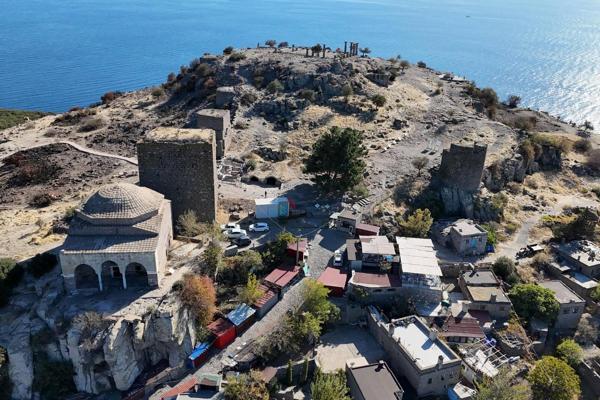Assos excavations unearth Ottoman-era bath
ÇANAKKALE


An early Ottoman-era bath has been discovered in Assos, located within the boundaries of Behramkale village in the northwestern province of Çanakkale's Ayvacık district.
Situated on the southern edge of the region known in antiquity as "Troas," Assos spans the summit and slopes of a volcanic hill opposite Greece’s Lesbos Island. Over centuries, the city has served as a continuous home to numerous civilizations.
Excavations in Assos, first initiated by American archaeologists in the 1800s, resumed in 1981 after a long hiatus. For the past 44 years, Turkish researchers have been leading archaeological digs in the area.
Speaking to the state-run Anadolu Agency, Professor Nurettin Arslan, a faculty member at Çanakkale Onsekiz Mart University’s Faculty of Humanities and Social Sciences and head of the Assos excavation team, noted that the work is supported by the Culture and Tourism Ministry.
Highlighting that 2024 saw the completion of the longest excavation season under the ministry’s Heritage to the Future Project, Arslan explained that the digs continued until the end of December.
Arslan noted that excavations were conducted at various sites in Assos, yielding significant discoveries. “The first of these was found at the Temple of Athena. Research conducted in the acropolis area revealed a small Ottoman-era bathhouse located directly behind the mosque. This bath, with its ‘cehennem’ [underground heating systems] and water management techniques, provides a remarkable example for understanding the engineering of the period. Despite its modest size, the bathhouse is exceptionally well-preserved, making it a valuable model of early Ottoman architecture,” he said.
He also drew attention to a marble piece in the bath's changing area, which holds special significance for the academic community.
“This piece bears an inscription dated to 480 A.D. during Emperor Zeno’s reign. The text provides extensive information on taxation, financial management, judicial practices, urban and rural regulations, land ownership, and governance. The analysis of this inscription is ongoing and its findings will eventually be shared with the scholarly world,” Arslan added.
The excavation also uncovered significant artifacts, including coins from the reign of Sultan Murad I and several ceramic fragments. "The bathhouse’s architectural design and construction techniques typify early Ottoman bathhouses. Based on our findings, we estimate that this bathhouse, along with the mosque and bridge, dates back to the 14th century during Sultan Murad I’s reign," Arslan said.
